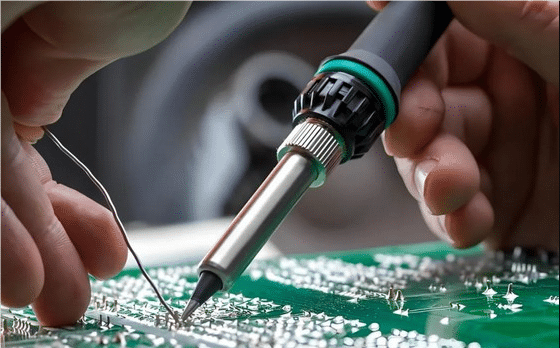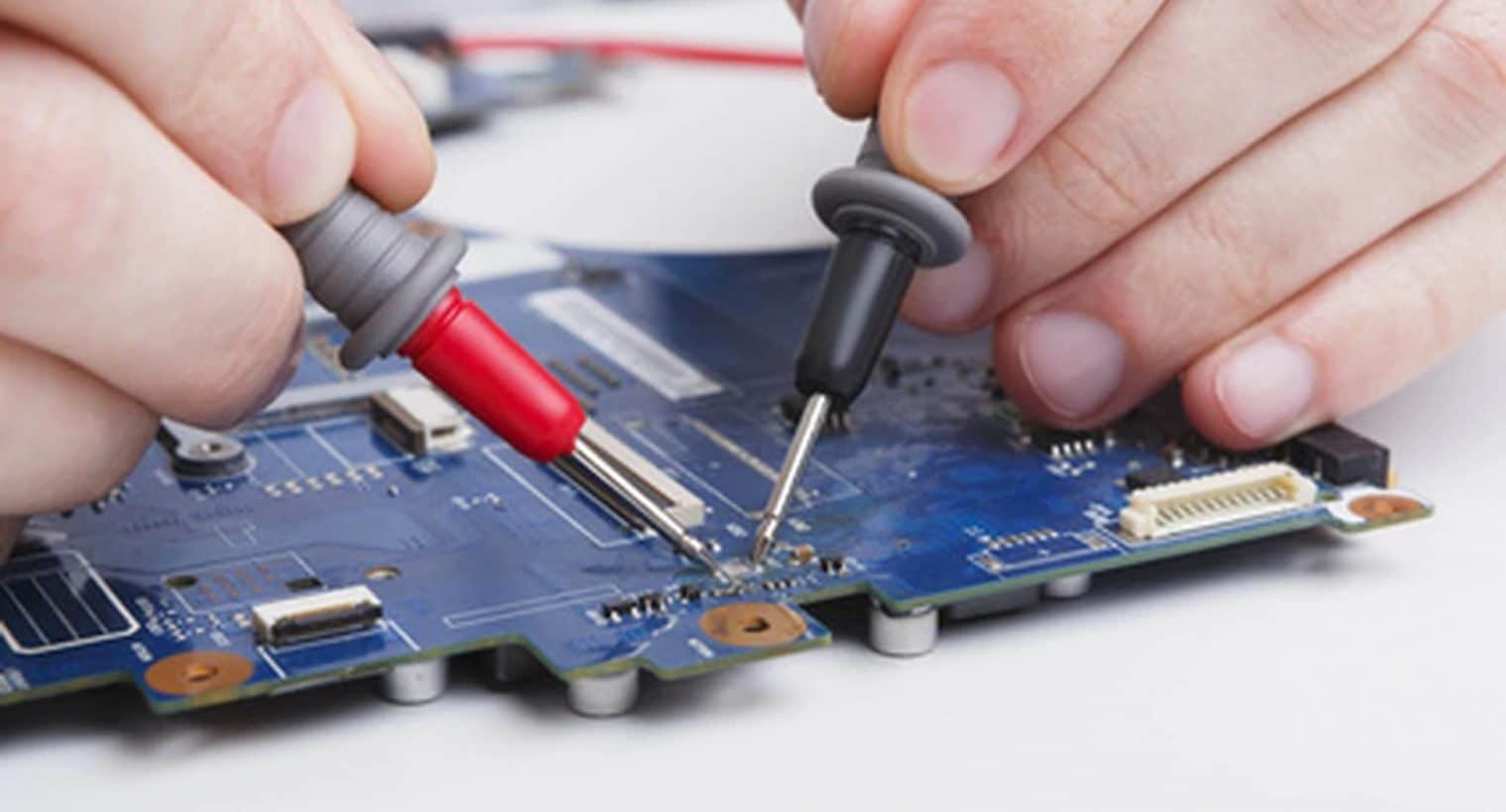Author: Zhou
With the miniaturization and precision of electronic products, surface mount technology (SMT) is becoming more and more widely used in the electronics manufacturing industry. In the SMT process, the amount of solder paste directly affects the quality and reliability of the solder joints. In some specific cases, in order to meet specific soldering requirements, we need to increase the amount of solder paste or solder in the local area.

The necessity of increasing the amount of solder paste or solder locally.
In some cases, a local increase in solder paste or solder amount is necessary, and here are some common reasons: Heat dissipation: For components that generate a lot of heat, increasing the amount of solder can help improve heat conduction efficiency. Mechanical strength: Increasing the amount of solder in areas subjected to mechanical stress can result in stronger solder joints. Compensate for dimensional deviations: Due to deviations in component pin and PCB pad dimensions, more solder may be required to ensure a reliable connection.
A method for increasing the amount of solder paste or solder locally
Here are some ways to increase the amount of solder paste or solder locally in the SMT process:
1.Adjust the size of the stencil opening
By adjusting the size of the openings in the stencil, the amount of solder paste deposited can be directly controlled.
Enlarge the opening: Enlarge the size of the stencil opening corresponding to the pad that requires more solder, thereby increasing the amount of solder paste deposited.
Use of special shaped openings: Trapezoidal or runway-shaped openings allow more solder paste to be deposited at the edge of the pad.
Advantages: Simplicity, low cost, no need to change existing processes. Disadvantages: If the operation is improper, it may affect the printing quality; Limited by the minimum feature size of the stencil.
2.Multiple printing
Print the same PCB multiple times to increase the amount of solder paste deposited.
Advantages: the amount of additional solder can be precisely controlled; Suitable for specific areas where more solder is needed. Disadvantages: increased production time and cost; Inaccurate alignment can lead to printing problems.
3.Use solder preforms
Before reflow soldering, place the solder preform on the PCB pad.
Advantages: the amount of solder can be precisely controlled; Suitable for applications that require large quantities of solder. Disadvantages: Manual placement is costly and time-consuming; Automated placement may require additional process steps.
4.Solder impregnation or wave soldering
For through-hole components or specific pads, solder dipping or wave soldering can be used to increase the amount of solder.
Advantages: Quickly and efficiently add a large amount of solder; Suitable for adjustments after reflow soldering. Disadvantages: Not suitable for all SMT applications; If not properly controlled, it can lead to solder bridging.
5.Adjust the metal content and rheological properties of solder paste
Higher solder amounts can be achieved after reflow by using solder pastes with higher metal content or different rheological properties.
Advantages: Can be applied to the whole board or selective area; There is no need to change the stencil design. Disadvantages: May affect the reflow curve and the overall process; Special solder paste is required, which increases the cost.
The decision to locally increase the amount of solder paste or solder in the SMT process should be carefully considered to balance its advantages with potential pitfalls. Each approach has its use case, and often requires a combination of approaches to achieve the goal. Engineers need to evaluate the specific requirements of the assembly process, the characteristics of the components, and the impact of productivity and cost.
What is SMT in engineering?
Surface mount technology is a part of the electronic assembly that deals with the mounting of electronic components to the surface of a PCB. Electronic components mounted this way are called surface-mounted devices (SMD). SMT was developed to minimize manufacturing costs while making efficient use of board space.Qihe SMT company develops and produces all kinds of SMT equipment suitable for world wide market, including pnp machine,reflow oven,stencil printer,pcb handling machines,and other products.
Small desktop pick and place machine TVM802A,TVM802B,TVM802AX,TVM802BX series suitable for beginners, for hobbiest or low vol usag.
Advanced level 4-head LED strip placement QL41 led machines and with rail universal series TVM925S,TVM926S,pick and place
Fully automatic 6-10-head placement QM61,QM62,QM81,QM10,machines, which are suitable for high volume mass production in factories.
Know more about us https://www.qhsmt.com/about-qihe-smt-equipment/
Follow us on social media https://www.facebook.com/Qihesmt/
What is SMT in programming?
Offline Automated Programming vs Inline SMT Programming
Qihe pick and place machine can be programmed directly on the SMT equipment .
Or Coordinates can also be imported csv file through programming software.
Currently supported software such as protel,DXP,Altium Designer,Pads,Candes,proteus,DXP.
Inline SMT programming is a solution to consider for narrow segments of device programming requiring short programming times, with medium to high volume, for just one device type.
WHAT IS SMT pick and place machine?
SMT (Surface Mounted Technology) is a comprehensive system engineering technology, which covers substrates, design, equipment, components, assembly processes, production accessories and management. When it comes to SMT pick and place machines, the automatic SMT production line requires automatic loading and unloading machine, automatic solder paste printing machine, placement machine, reflow soldering machine, AOI inspection equipment, conveyor,connecting table, etc. For these SMT assembly line equipment, Qihe SMT can offer you machines in prototype SMT line, small SMT production line, mass production SMT line at low SMT line cost. Contact us now if you are interested.pick and place.pick and place machines,smt machine price,smt machine supplier,suction nozzle,smt assembly,feeder,stock in eu,pcb printer,openpnp feeder,openpnp,pcb pick and place,smt nozzle,smt line,smt meaning,smt process,smt setup,pnp machine,pcb assembly,p&p machine,p&p,pick&place,pick&place machine,pnp,stencil printer,reflow oven,pick and place machine,SMT equipment,smd machine,smt machine,SMT pick and place machine,pick and place machine,smt pick and place.
WHAT IS SMT ASSEMBLY LINE?
With the development of technology, future electronic products will be lighter, smaller and thinner. Traditional assembly technology can no longer meet the requirements of high-precision and high-density assembly. A new type of PCB assembly technology-SMT (Surface Mount Technology) has emerged. SMT Assembly is the use of automated machines to assemble electronic components on the surface of the circuit board. Its density, high speed, standardization and other characteristics occupies an absolute advantage in the field of circuit assembly technology. In addition, SMT assembly has a wide range of uses.
https://www.qhsmt.com/fully-automatic-smt-pick-and-place-machine-line/
